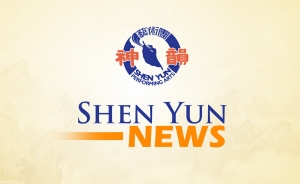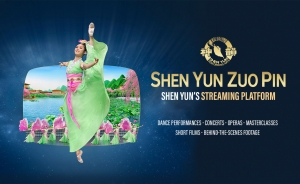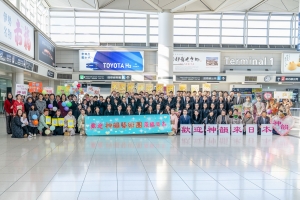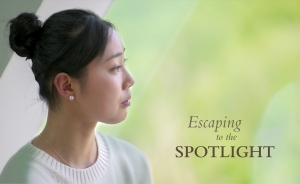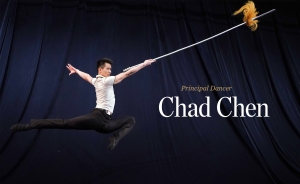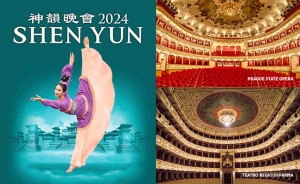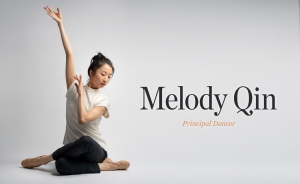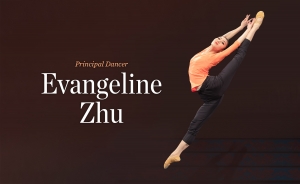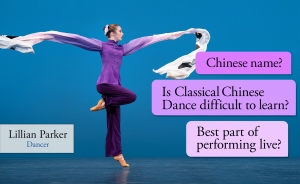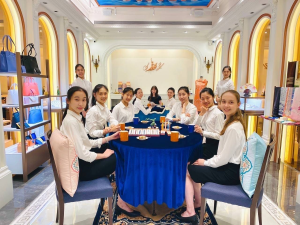SAN FRANCISCO CHRONICLE: Chinese New Year Spectacular in S.F., Cupertino
By Mary Ellen Hunt
If ancient Chinese goddesses were modernized to the 21st century, one imagines that they would look a lot like Vina Lee, the tall, fine-featured, elegant choreographer and dancer whose artistry graces the Chinese Classical Divine [Shen Yun] Performing Arts Company in the troupe's forthcoming performances of the Chinese New Year Spectacular at the War Memorial Opera House and the Flint Center in Cupertino.
Delicately sipping tea one afternoon in the cafe at the San Francisco Asian Art Museum, the soft-spoken yet forthright Lee speaks animatedly about growing up in China and the love for her country's cultural history that colors her view of Chinese dance.
Trained at the Beijing Academy of Dance, Lee studied classical ballet as well as Chinese classical dance and folk dance. In the late 1980s, she danced with the Guangdong Dance Theatre, but a yearning for artistic and political freedom led her to immigrate to Australia, where she taught and danced for several years before becoming a dancer and assistant company manager for the Divine [Shen Yun] Performing Arts Company and choreographer for its boldly ambitious and enormously popular Chinese New Year Spectacular.
The show - which each year features new entries in a smorgasbord of vignettes - takes viewers on a visually dazzling tour of 5,000 years of Chinese history and culture via bravura displays of acrobatics and grand tales told through flourishes of Chinese classical dance. With hundreds of dancers in two dozen carefully designed, richly costumed pieces - everything from colorful handkerchief dances, Imperial-style dances in high platform shoes, drum dances, folk dances and wushu displays - it's a heady blend of the ancient and modern, of traditional Chinese instruments and their Western counterparts, and contemporary experiences expressed using the formality of Chinese classical dance.
The true traditional Chinese dance, Lee says, blends three crucial elements: the yun or manner of carrying one's body, the technique and the physical forms, such as the positions and combinations of movements used in training martial artists.
Methods of teaching Chinese dance, Lee says, were rarely written down, but although ways of teaching dance may have changed over time, much of the technique and forms have been passed down from generation to generation through wushu training.
"Wushu, or martial arts, used in soft ways is dance, and vice versa," she says. "Martial arts never really changed - it got better, but the style did not change."
The yun, however, is a different story. The way a people comport themselves depends on the culture, and China's culture has evolved vastly since the Communist Revolution and the modernization of its society. Some of what makes Chinese yun, Lee says, has been lost in the process.
"The modern contraction," she says, tightening her midsection into a curve modern dancer Martha Graham would easily recognize, "is very different from the Chinese curve. It is inhale, exhale - that's a different energy."
Without standing up from the cafe table, Lee strikes a subtle but definitely different note, curling and rounding her torso to illustrate what immediately seems - even to an untutored eye - to be a more characteristically Chinese pose, one closer to the graceful statues of goddesses such as Kwan Yin and Ho Hsien-Ku.
"Lots of shows claim to be Chinese dance," Lee says. "It's familiar to Western audiences, but they may wonder, why do they do this movement or that movement? Even lots of dancers are confused as to what is real Chinese dance."
Lee strikes a pose, covering her face flirtatiously with an imaginary fan.
"They may look with the eyes like this," she says, glancing over her fan with a bit of come-hither peekaboo. "But in true Chinese dance, the women are conservative, more shy. They are hiding their faces with the fan," she adds, changing her pose slightly to convey a more delicate sensibility.
Since moving to Australia in 1990, Lee has not been back to China. A practitioner of the spiritual discipline of Falun Gong - a modern form of the ancient qigong practice of meditation and control, whose adherents have been heavily persecuted by the Chinese government in the past decade as a fringe religious sect - Lee has sensed political pressures, even far from her homeland.
Although at first glance the spectacular might look like more of a grand cavalcade of Chinese cultural scenes than a vehicle for a political agenda, some of the show's vignettes have depicted stories that reference hot buttons such as Falun Gong or repression in Tibet. Lee says that in some of the places the company has toured, Chinese officials have attempted to discourage local audiences from attending their shows.
"Because we dare to raise human rights issues, we're a 'Falun Gong show,' " she says. "And if you say 'Falun Gong,' people suddenly become scared.
"Since I was a child, I have always loved the real Chinese culture, but the Chinese government doesn't want the old culture to come back. They want to damage it, not only on the outside, but internally, too."
A return to core principles of traditional Chinese art is what Lee feels sets the Divine [Shen Yun] Performing Arts Company apart from what Western audiences have come to understand as Chinese dance. The Chinese New Year Spectacular, she says, harks back to a purer form of the Chinese dance, one built upon not just the motions of Chinese dance but also on a respect for divine gifts, virtue, sincerity and good deeds.
"I hope that through our performance that we are deeply connecting with life, not just entertainment," she says. "It's not just Chinese culture. It is the principles all peoples share."
January 4, 2009


